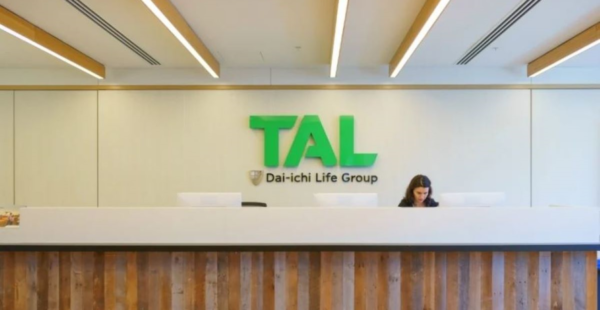The risk insurance pecking order

Financial Newswire’s life/risk insurance expert, Col Fullagar, explains the need to understand the pecking order of risk insurance priorities.
The purpose of insurance is to place someone in the same or a similar position after an unintended and unexpected event as that which existed prior to the event.
There are of course a multitude of different types of insurance with a gazillion different events cumulatively covered under them, but irrespective of whether the question is to take out insurance, to take out more insurance or to reduce or even cancel insurance, the challenge is to know what type of insurance is the most important, what is the least important, and the pecking order of what comes between the two.
Not surprisingly, this article will only consider life risk insurance with all other forms of insurance happily ignored, however, the logic that follows can equally be applied to other insurances in their own right or when compared to risk insurance.
Also, the pecking order will be considered from a generic perspective ie the unique circumstances of a particular client will be ignored with the reason being the infinite client variants are appropriately considered within the adviser driven advice process. This crucial aspect of the advice process will, however, be put in context towards the end of the article.
To begin ……. enter the World’s simplest needs analysis which comprises two, and only two, questions.
Question 1 – Is it likely to happen?
The first US space station, Skylab, was occupied for around 24 weeks between May 1973 and February 1974; however, because the facility to re-boost it did not exist at the time, its orbit began to decay, and it soon became clear it would eventually plummet back to earth. Exactly where, however, was less clear. Coming out of this uncertainty, several entrepreneurial insurers began to offer cover for people concerned it might drop on them or their property.
The reality was that the chance of an individual being affected in this way was so small that any coverage offered would have represented nothing more than “junk” insurance (bad pun intended).
Thus, the first question that should be considered within the needs analysis is “The event for which insurance is being considered, is it likely to happen?”
Question 2 – What is the impact?
As it turned out, Skylab disintegrated upon re-entry with pieces scattering over the Indian Ocean and Western Australia. Thus, whilst it made a significant impact, no person or real property was impacted.
The second needs analysis question is therefore, “If the event happened, would it have a material and detrimental financial impact on the insured person, their family or their business?”
If the answer to either or both questions is No, arguably the particular insurance being considered should be passed over BUT if the answer to both questions is Yes, insurance should be seriously considered.
In order to move closer to creating a pecking order, however, the above needs to be taken one step further, ie. the greater the likelihood of an event happening and/or the greater the financial impact if it did happen, the greater the imperative for the particular insurance to be put in place.
It is against this background that the Risk Insurance Pecking Order will be considered.
The types of risk insurance to be evaluated are:
- Term Insurance with the event being the life insured suffering a sickness or injury leading to death or a diagnosis of terminal illness.
- Total and Permanent Disability (“TPD”) insurance with the event being the life insured suffering a sickness or injury leading to a total and permanent inability to work in their own or any similar occupation, depending on the policy definition.
- Trauma Insurance with the event being the life insured suffering an insured, major medical trauma in line with the relevant policy definition.
- Disability Income Insurance and/or Business Expenses Insurance with the event being the life insured suffering a sickness or injury leading to a temporary inability to work in their own occupation, with temporary potentially being to the policy expiry date, for example, age 65.
Also, only the personal insurance need for the above will be considered if for no other reason than business insurance largely only considers term and TPD cover.
So, beginning with Question 1, the period of time over which “likelihood” will be considered is 12 months, with this period representing the theoretical time between adviser reviews of a client’s insurance portfolio. Additionally, for income protection and business expenses insurance, the inability to work arising out of sickness or injury will be taken to be at least 180 days with this period representing a “severe” disability.
(Source: Australian Industry Experience to 2021)
Thus, for example, a 40 year old has around 0.5 chance in 1,000 of dying over the next 12 months but around 5 chances in a 1,000 of suffering a sickness or injury that would prevent working for at least 6 months.
Based on the likelihood of occurrence, the pecking order so far is:
- Income Protection and Business Expenses Insurance;
- Trauma Insurance; and
- Term and TPD Insurance neck and neck.
However, likelihood is not the only consideration and, arguably, it is not the main consideration because whilst many unintended and unexpected events are likely to happen, the financial impact if they did may be of little or no consequence. For this reason, a priority “weighting” is given to the second Question.
Question 2, what is the financial impact of the insured events on the life insured and/or their family and/or their business, with the last applying in the case of business expenses insurance.
Financial impact will be considered in three arears:
- INCOME
The interruption or cessation of personal, family and/or business income.
Whilst by definition, for death and TPD the personal income of the life insured permanently ceases, the score of 10 will be discounted slightly to take into account the fact that family income may continue albeit potentially at a lesser rate if the life insured’s partner is able to work and/or if sufficient investment income is in place.
With trauma events, notwithstanding the insured event occurring, there may not be a lengthy interruption to the ability to work. Similarly, with a sickness or injury under income protection and business expenses, bearing in mind the average claim duration of circa 2+ years, a return to work may soon or eventually be achieved.
Therefore, taking the above into account, the relative impact severity scores out of 10 are suggested to be:
Death TPD Trauma S/I
9 9 6 7
- SAVINGS
The erosion of family savings.
The relative impact of a death on family savings is lower especially if the cause of death is sudden. If, however, the claim is for terminal illness, there might be a considerable impact on savings.
For TPD the long-term impact on family savings could be devastating.
For trauma, for similar reasons that applied to INCOME, the impact may be less.
For sickness or injury, the immediate, short-term impact may be less, however, the longer the inability to work continues the closer the impact equates to that of TPD.
Relative impact severity scores are suggested to be:
Death TPD Trauma S/I
8 10 6 8
- EXPENSES
The incurring of additional personal and/or business expenses.
Additional costs incurred as a result of death would include funeral and legal costs; however, once again a terminal illness claim could bring with it considerable expenses.
For TPD, trauma and income protection and business expenses sickness or injury additional expenses could include medical costs, costs of rehabilitation and any lifestyle changes; however, the duration of those expenses will be potentially greatest for TPD.
Relative impact severity scores:
Death TPD Trauma S/I
7 10 8 9
The total financial impact scores thus become:
Death TPD Trauma S/I
24 29 20 24
So, pulling likelihood and impact scores together, would indicatively infer the risk insurance pecking order to be:
- Priority 1 – TPD Insurance; whilst equal least likely to occur, it scores the highest in potential financial impact. An interesting outcome for this much maligned risk product.
- Priority 2 – Income Protection Insurance and Business Expenses Insurance in so far that the likelihood is greatest and financial impact is equal second greatest. Further, and as noted, for longer term claims the potential financial impact would increasingly be equivalent to that of TPD.
- Priority 3 – Term Insurance; the equal least likely to occur in any 12 month period and an impact score all but the same as income protection insurance.
- Priority 4 – Trauma Insurance; whilst more likely to occur than events under Term Insurance, the potential financial impact is materially lower. Further, the “outcome” in regard to trauma insurance is “uncertain” in comparison to the other risk insurances as payment is based on a definition being met rather than an outcome such as death, total and permanent disability, etc.
As indicated at the start of this article, the pecking order has been considered on a generic basis ie net of the unique circumstances of a particular client. Crucially, however, these circumstances are quite capable of turning the pecking order on its head, for example:
- An insured approaching retirement with substantial savings in place but investments underpinned by debt, may have a reduced need for income protection insurance but considerable need for term insurance, or
- A young, single, self-employed insured may see the main priority to be income protection and business expenses insurance to ensure financial survival of themselves and the business or sale of the business as a going concern, if a severe sickness or injury was to occur.
Notwithstanding the above, there is arguable merit in the generic, whether on the espoused or some other basis in so far that:
- It casts doubt on traditional wisdom which suggests that “income protection is always the highest priority”. Rattling the cage of traditional wisdom is not a bad thing bearing in mind the risk associated with the words “always” and “never”,
- It provides a base logic that is easy to understand, adapt and script to a client specific situation, and
- It might lead to robust debate about alternate pecking orders ……. Allora !!!
PS Many thanks to the AIA Actuarial Team for provision of included statistcs












Interesting article but based on AFCA findings my clients get everything.